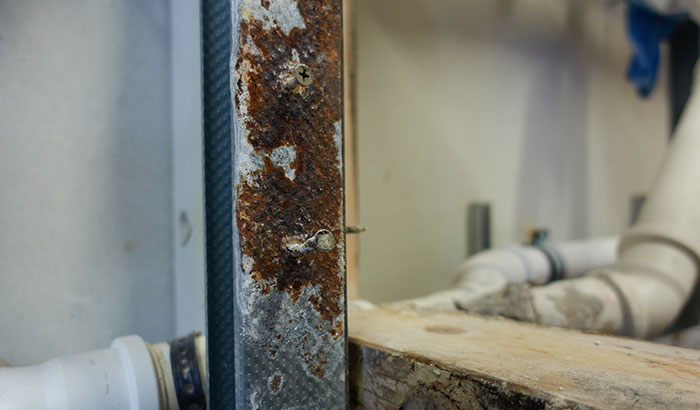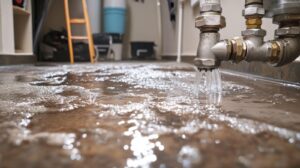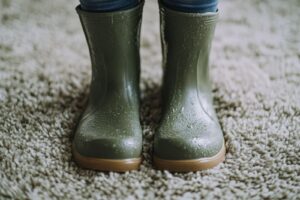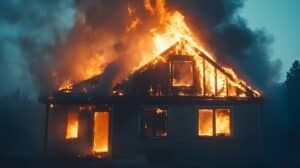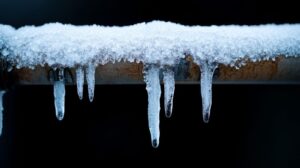Sewage backups are costly and dangerous, making your wallet smaller and putting your health at risk. They’re also hazardous to clean up, often requiring professional help.
The best way to handle sewage is by preventing it from ever getting into your home. Today’s blog is all about sewage damage and how to keep your home safe from it. Keep reading to learn everything you need to know.
What Is A Sewer Back Up?
If subsurface water comes up through your drain or sewer system, you’re dealing with a sewage backup. Sewage backup usually comes up in your toilet, sink, or shower.
Several things can cause sewage backups, including pipe deterioration, tree roots getting into the line, or clogging lines with sanitary products or cooking products like fat, grease, or oil. Improperly diverting downspouts, stormwater, or groundwater into your sewage system can also cause backups.
Not all sewage system backups are going to be your fault, though. While you are responsible for the sewage lines on your property, they are connected to the main sewer line that is not on your property.
The main sewer line is your city’s responsibility. Sewage backups can come up through these lines and into yours — this should be a rare occurrence if it ever happens, though.
The vast majority of the time, following the steps outlined below will keep your home safe from sewage backups.
9 Ways to Keep Your Home Safe From Sewage Damage
- Don’t flush anything other than toilet paper down the toilet. It can be tempting to flush sanitary or cleaning products, but these can clog your toilet and your sewage line. Always toss sanitary and cleaning products in the trash, where they can’t clog anything.
- Keep sewer lines away from tree roots. As beautiful as trees are on your property, you’ll want to keep them far away from tree roots.
Now, we’re not talking about the branches providing shade for your yard. The tree roots could cause problems if they get into your sewer line. While roots are good for the soil in the ground, they need to stay out of your sewer line since they can grow into shapes that will clog your system and cause backups. - Have a professional install an exterior cleanout system. This will ensure any mess from cleaning the sewer system will happen outside, away from your home. It’s easier to clean up an outdoor mess than an indoor one.
It’s best to have a professional install one instead of installing it yourself because it can be tricky. You should be able to access the cleanout on the ground’s surface. You should install it in a valve box to keep it safe.
You need two cleanouts: one near the base of the stack and one where the building drain and sewer connect. The cleanout should be made with a “Y” branch fitting and be at least two inches long above the floor. The only exception is if you need a flush cover in a high-traffic area. - Don’t put fat, grease, or oil down your drain. When you’re cooking, pouring things like fat, grease, or oil down the drain is easy. However, these don’t break down and can clog your sewage lines, causing slow drainage and, eventually, sewage backup.
- Line or replace old pipes. As your pipes get older, they get worn down. It’s no wonder, with water and sewage constantly flowing through them. To keep your pipes in tip-top shape, you’ll want to line them. A professional plumber or restoration company can advise when it’s best to line your pipes.
And when they get old enough, you should replace them altogether. It’s an upfront investment, but it will pay dividends in the long run to prevent you from dealing with sewage backup. - Install a sewer backup valve. This device enables water from your toilets, sinks, and tubs to flow to your home’s primary sewer system. If water flows backward instead of forwards, the flap on the valve will close so that water can’t get into your home.
- Don’t connect downspouts, french drains, sump pumps, or flood control systems to your sanitary sewer line. Reserve your sanitary sewer line for transporting your sewage for disposal. Connecting other lines to your sanitary sewer line provides another way for a backup to happen. Preventing this all together is your best bet.
- Have your plumbing and sewer lines professionally inspected. Professional plumbers and sewage damage restoration experts can spot things untrained eyes won’t see, and you can remedy many problems before they cause significant issues. It’s a good idea to have a professional inspection at least once a year.
Once the professionals inspect your sewage system, they can tell you how often you should check it. They can also answer any other questions you might have. - Elevate your house drain. We especially recommend this step if your house drain is in your unfinished basement. The downside to this solution is that your house drain won’t be hidden from view, and you might also need to raise parts of the outside main house sewer. Still, it’s an effective option to prevent sewage damage in your home.
Call Black Diamond Restoration Today
With over 20 years of experience, Black Diamond Restoration is the expert you need to restore your home from sewage damage, including sewage backups. Sewage damage restoration is often a biohazard that requires a careful clean-up to keep it from spreading to other parts of your home or making you and your family sick.
Black Diamond Restoration provides 24/7 sewage, water, mold, fire, smoke, and storm damage restoration to the greater Salt Lake and Utah Valley areas. Call us at 801.512.4194 to schedule your service, or visit our website to learn more about us.
toto slot
